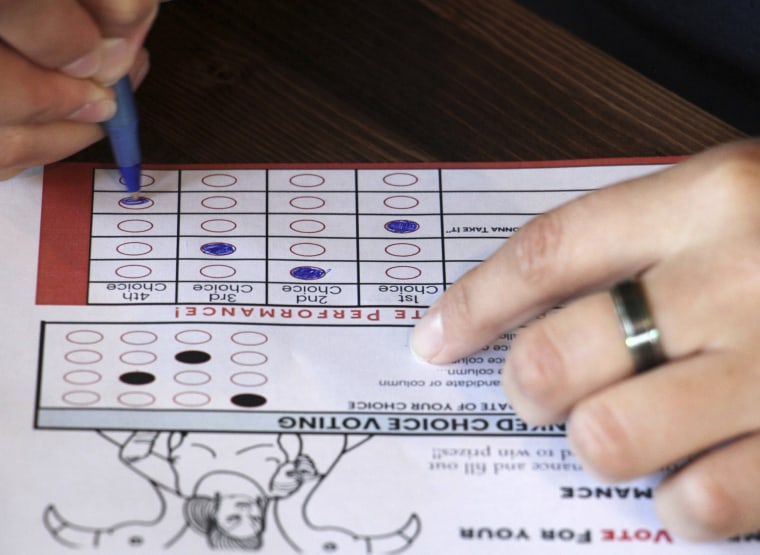The results in Alaska’s special House election won’t be known for at least two weeks, but ranked choice voting advocates say the state’s new election system is not to blame.
Under the new system, voters rank candidates in order of preference. A candidate can win the race if he or she wins a majority of the initial votes. If no candidate wins a majority, the race heads to instant runoffs where the last-place candidate is eliminated, and his or her voters are redistributed to the remaining candidates based on the voters’ preferences. The rounds continue until two candidates remain and the candidate with the most votes wins.
Tuesday’s special election to replace the late GOP Rep. Don Young was the state’s first test of this new system. The NBC Decision Desk projected that none of the three candidates — former GOP Gov. Sarah Palin, Democrat Mary Peltola, and Republican Nick Begich — will win a majority of the votes, triggering the state’s ranked choice voting process.
Advocates said the results in a close race would be just as unclear under the traditional system, because election officials have to wait for absentee ballots. Overseas absentee ballots are due Aug. 31, and many Alaskans vote by mail. The ranked choice voting process won’t start until Aug. 31, according to the state’s election division.
Once all of the ballots are in hand and processed electronically, the ranked choice voting process can happen immediately. Results are expected to be certified by Sept. 2.
“It can happen in a matter of seconds,” said Deb Otis, research director at the election reform group FairVote, who explained the tabulation process happens via a computer algorithm, not by hand.
Alaska officials are also not releasing unofficial ranked voting results until after Aug. 31. Otis noted officials have been clear about communicating that process, but the timing of releasing results is “an area … for improvement.”
“It is best practices to release the RCV tabulations as early as possible on election night or possibly the day after” she said, because voters and campaigns are accustomed to having a sense of the results early.
Some recent ranked choice elections have taken several days to sort out a winner, but advocates stressed that was due to how and when officials chose to count ballots, not the ranked choice process itself.
Last year, the winner of New York City’s Democratic primary for mayor was called two weeks after primary day. And in 2018, it took over a week to determine who won Maine’s 2nd District race.
“These were choices by different election administrators,” Otis explained. “Folks make different choices about when to count the ballots. If we look to ranked choice areas like San Francisco or cities in Utah, those folks tabulate ranked choice election results on election night.”
In Alaska, the wait for results could leave a vacuum for election skeptics to cast doubt on the results. Nick Troiano, executive director of Unite America, another electoral reform group, said the wait underscores the importance of educating the public about the process.
”Candidates who cast doubt on the system should be wary,” Troiano said. “...Candidates who don’t adapt to the new reality are likely to lose under the new system.”

